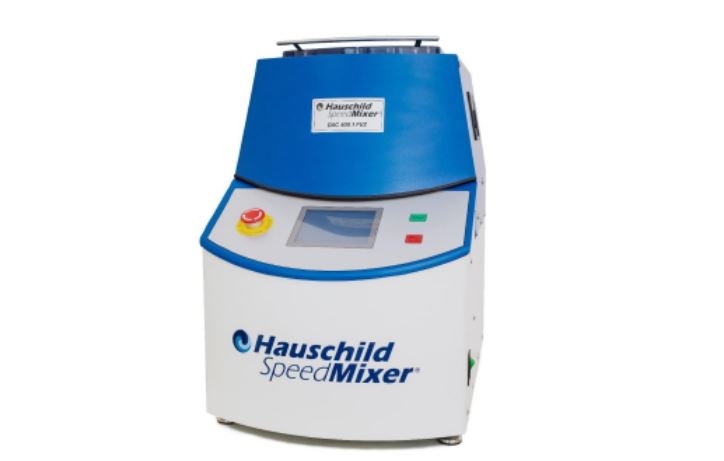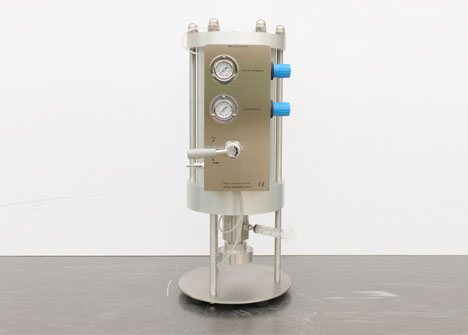Hauschild SpeedMixer SMART DAC series
Hauschild SpeedMixer SMART DAC series is a bladeless lab mixer featuring more power and control for optimal mixing in R&D labs and production facilities.
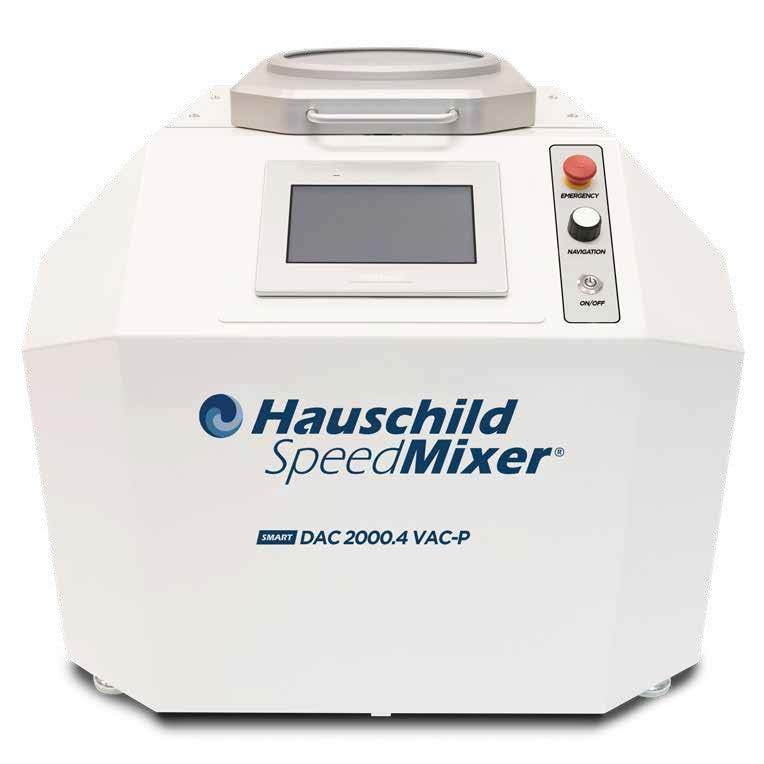
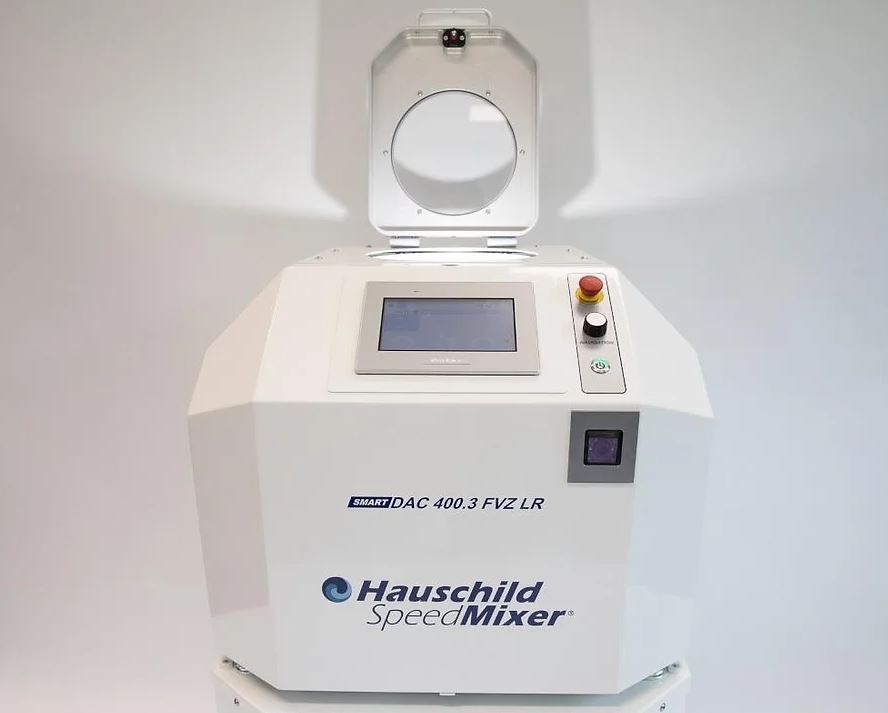
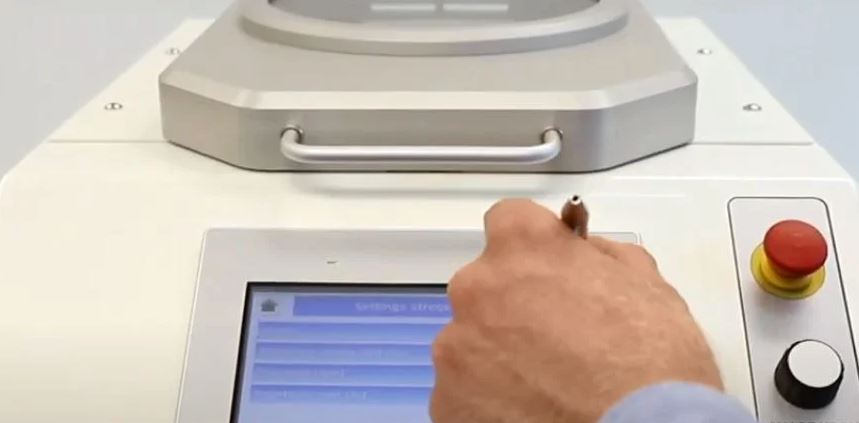
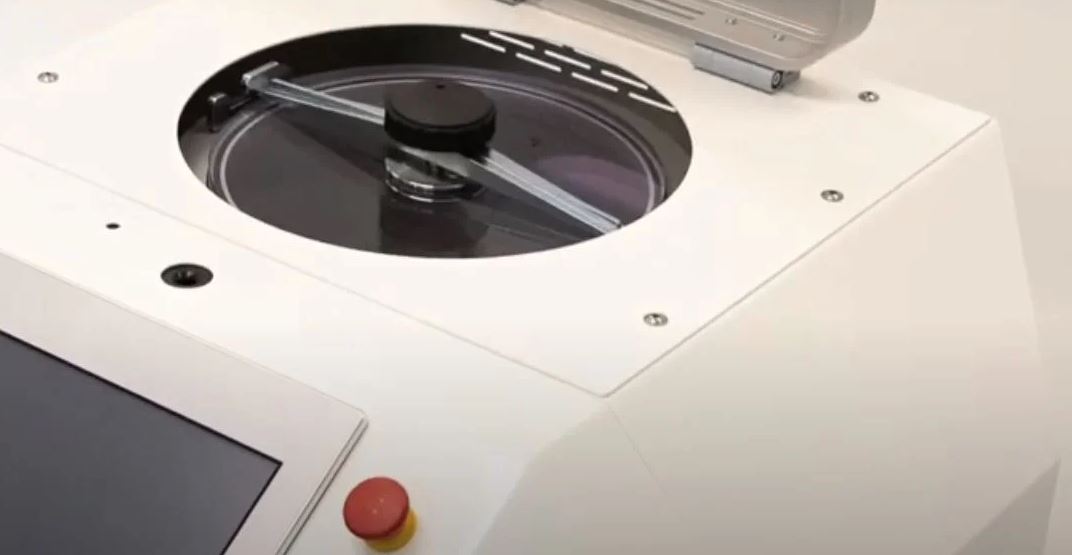
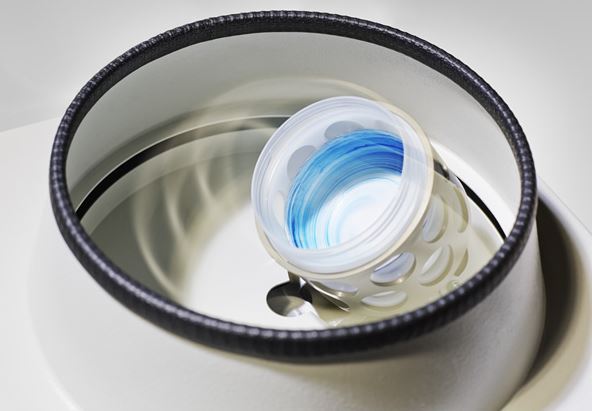

Hauschild SpeedMixer SMART DAC series
Hauschild SpeedMixer SMART DAC series is a bladeless lab mixer featuring more power and control for optimal mixing in R&D labs and production facilities.
| Manufacturer | Hauschild |
|---|---|
| Product Series | Hauschild SpeedMixer |
| Measurement principle | Bladeless lab mixer |
| Application | Emulsions, Liposome Processing & Mixing, Rheology And Viscosity |
| Sample type | Liquids, highly viscous pastes and powders |
| Mixing capacity (g) | 250-2000 |
| Speed (rpm) | 50-2500 (model dependent) |
| Mixing time (s) | 5-600 (Pro version up to 1800) |
| Programmable | 500 programs |
Product Overview
The Hauschild SpeedMixer® SMART DAC is designed with a new mechanical configuration and ultra-sophisticated controller, that aims to mix the “unmixable”, as it boosts daily lab mixing to levels of efficiency never reached before. Based on the original DAC mixer using dual asymmetric centrifugal (DAC) technology developed over 50 years ago, the SMART DAC series is up to 20% more powerful than the standard LR version.
The Hauschild SpeedMixer® SMART DAC SERIES features:
- Configurations with mixing capacity from 250 up to 2000 grams.
- Variable counter rotation for a wider range of hard materials to be mixed. Improves degassing without vacuum and reduces risk of vibrations with increased mixing weight and volume.
- Temperature of the mixture is displayed while mixing in real-time with an accuracy of ± 1° C. Cooling system can be triggered once threshold has been reached. Humidity, smoke & fire, dissolved gases and/or toxic substances detectors can be integrated and set to deliver custom alerts or trigger actions.
- Create and save up to 500 programs with acceleration and deceleration control.
- QR code reader and IoT compliant
- Vacuum Robotic configuration, fully automated.
The Hauschild SpeedMixer SMART DAC Series is a compact, bladeless mixer designed for fast, efficient, precise mixing with almost 100% degassing capability. It enables the production of homogeneous multi-material compounds such as liquids, highly viscous pastes, and powders in just a few minutes. Virtually indestructible and with accuracy and repeatability that others simply cannot match, Hauschild SpeedMixer remains the most sought-after mixer in laboratories and R&D facilities around the world.
- Demonstration video
- Benefits
- Applications
- Accessories
Demonstration video
Benefits
- Speed
Hauschild SpeedMixer® is a bladeless on demand mixer that uses unmatched DAC technology to allow for extremely fast, bubble-free compound mixing of materials in any form and combination. Liquids, high-viscosity pastes and powders can be mixed to create homogeneous samples from <1g up to 10kg in less than 10 minutes!
- Repeatability
With precise controls for speed, time, acceleration, variable counterrotation, temperature, cup size, beads/cylinders, vacuum and more, Hauschild SpeedMixer guarantees repeatable results, 100% within specification. Programmable cycles ensure an absolutely identical, reproducible mix.
- Scalable
Unique ability to simulate large-scale production equipment in the small batch lab testing phase. Use only the materials needed to create batch after batch quickly, with zero waste or clean up. Increase mixing weight & volume without the risk of high vibrations.
- No cleaning needed
Works with disposable cups replacing the need to use chemicals for cleaning.
- Degassing
Macroscopic bubbles or voids are removed from materials in-situ during the mixing operation. The vacuum SpeedMixer option can remove microscopic bubbles, adsorbed air, solvent, moisture or other contaminants from material.
- Variable counter rotation
Users can control the counter rotation of the jar. This offers several advantages: – A wider range of hard materials can be mixed – Degassing without vacuum can be improved – The temperature of the materials can be controlled
- Temperature measurement
The mixture’s temperature is displayed in real-time while mixing with an accuracy of ± 1° C. The automatic cooling system can be triggered once a certain temperature’s threshold has been reached. Humidity, smoke & fire, dissolved gases and/or toxic substances detectors can be integrated and set to deliver custom alerts or trigger actions.
- Fully programable
Create and save up to 500 programs with up to 12 steps per program. A multi-program function is also available to combine up to three programs with 36 steps. The acceleration and deceleration can be programmed for each individual step.
- Internet of things (IoT) compliant
CE certified and UL compliant. Offers the possibility to integrate the SMART DAC in large networks, share the device and optimise its use as well as increase safety.
- Vacuum robot
Vacuum Robotic configuration is available from 250 grams up to 2000 grams. Next-generation controller allows the Vacuum Robotic machines to be fully automated and can be easily integrated in any robotic system with high reliability. SMART DAC Robotic version is equipped with a servomotor.
Applications
3D Printing / Additive Manufacturing (AM)
Additive manufacturing (3D Printing) is an effective way to rapid-prototype high quality parts, create molds for investment casting or even produce finished goods. The properties of starting materials like polymers must be optimised to ensure 3D printed parts will perform as intended. To ensure that lab scale properties are accurate, all materials must be dispersed homogeneously in the sample, and bubbles / voids must be removed before testing. The same is true at the manufacturing scale.
Adhesives/ Sealants
Adhesive and sealant products must be mixed homogeneously and free of unwanted bubbles & voids to deliver the best performance. Optimisation may require dissolving and dispersing tackifiers into pressure sensitive adhesives, blending polymers with filler and vacuum degassing moisture cured urethanes & silicone products, dispersing rheology modifiers like fumed silica, incorporating structures like hollow glass micro balloons to reduce density etc.
Aerospace and Defense
Epoxies are frequently used as adhesives, gap fillers & liquid shims, potting compounds for electronics, impregnated and pre-impregnated (pre-preg) fibers, and even coatings. They can be formulated with a low viscosity for application like conformal coatings or with higher viscosity and even thixotropic properties when they need to stay in place and not “slump” for applications like abradable materials. Epoxies can be packaged into cartridges or syringes and extruded to simplify handling and application. Their reaction/cure can also often be accelerated with heat to further reduce process times.
Cannabis
As the cannabis industry continues to grow, manufacturers are looking for ways to process products more efficiently and at higher volumes with greater differentiation. Optimised extraction process, efficient solvent stripping methods and fast mixing / blending processes are some of the best ways to reduce cost and increase throughput. Although ethanol is rapidly removed from distillate, butane extracted distillate can require several hours (or even days) in vacuum ovens to reduce the butane content to safe levels. An optimised vacuum mixing method has been proven to reduce the time required for butane purging/stripping processes to a few minutes.
Cosmetics
Mixing & dispersion during the formulation and manufacturing processes is key to the performance of formulations. Pigments and performance enhancing additives such as emulsifiers, moisturisers, film formers, waxes & oils, etc. must be properly dispersed to provide the desired effect. A powerful mixer that can provide variable amounts of shear, depending on the product requirements, is important. Mixing in single-use containers is convenient and helps avoid cleaning when formulating the many iterations that are often necessary to optimise a product.
Ceramics
Ceramic products often start as a combination of powders, binder, and a solvent such as water or alcohol. The powders often vary in size and shape (morphology) so that they will pack together efficiently to provide the desired density, porosity, and mechanical properties. It is important that any agglomerates in these powders are broken down and homogeneously dispersed so that the finished product is not weakened by areas of unmixed material. For slurries bubbles and voids should also removed to prevent negative effects on mechanical, thermal, electrical properties. Once materials have been properly mixed and deaired it can then be formed into the desired shape by injection molding, dry pressing, casting, 3D printing, etc. and then baked / sintered into a solid body.
Compounding pharma
Product customisation, coupled with patients’ urgent needs for treatment, necessitate almost constant mixing, milling/dispersing, and blending. Compounding equipment must work fast to keep up with need. It is also critical that the equipment provides perfectly homogeneous mixing / milling / dispersion of a broad range of materials to guarantee accurate and precise dosage of Active Pharmaceutical Ingredients (APIs) can be achieved. It must also be easy to clean thoroughly and/or process materials in single-use containers so cross contamination is avoided.
Paints and inks
High shear milling and dispersion equipment may be necessary to reduce the particle size of pigments or additives to achieve the desired fineness of grind, surface finish, and/or color. High powerful, high-speed mixing is often used to accelerate R&D or manufacturing. Equipment should be able to be cleaned easily or work with single use mixing vessels & components. This saves time, reduces the use of cleaning solvents, and minimises the potential for erroneous test results cause by cross contamination.
Polyurethanes
Fast reacting urethanes & polyurethanes can be challenging to mix and test at a lab scale as they may start to cure or blow (foam) seconds after combining components. Extremely rapid mixing is needed to thoroughly mix and still have time to pour & cast test parts. Mixing with single use mixing vessels & components is also highly recommended as the materials are likely to cure before they can be cleaned off. For materials other than foams, it is often necessary to deair and/or vacuum degas materials prior to curing to prevent voids and achieve the best physical properties.
Silicone
Silicones are often mixed with pigments for aesthetic or functional purposes (e.g., barium sulfate for radiological opacity), with additives such as rheology modifiers and adhesion promoters, or even with active pharmaceutical ingredients for drug delivery. They must be mixed thoroughly, at the right ratio, and without voids to achieve the best possible physical properties. Controlling temperature during the mixing process will help to maximise working time. Vacuum mixing is also helpful in many cases to remove difficult voids as well as entrapped air and gasses. It is one of the best ways to avoid bubbles which can be formed by expanding gasses during a heat accelerated cure.
Light emitting diodes (LED)
The key to achieving a long lasting and rugged product with any type of electronics is to encapsulate / “pot” the components. This hermetically seals them to keep out moisture & other materials that could damage the product or reduce performance. Potting also protects delicate components from vibration and shock. Properly mixing the potting compound ensures that it will cure fully and achieve the best physical properties. Vacuum degassing the potting compound will prevent bubbles or voids (especially when using heat to accelerate cure). It is an important step as those bubbles & voids could potentially cause a failure if unaddressed.
Batteries
With the ever-increasing demand for high performance lithium-ion batteries used in Electric Vehicles (EVs), solar power storage, consumer electronics the testing and quality control of materials during the battery manufacturing process critical. A key component is the battery slurry, a complex suspension made by mixing an active material like graphite with a binder powder, solvents and additives. The slurry is applied to multiple layers if aluminum foil and copper film to create the battery cell. Slurry mixing is challenging as lithium-ion battery slurries are viscous, containing raw materials that must be precisely deagglomerated. The mixing process must also be highly repeatable to ensure optimal product performance.
Epoxies
Maximum performance can be achieved by using the correct ratio of resin to hardener, mixing thoroughly, and removing bubbles/voids from the material. Once the resin and hardener are combined they begin to react, so high speed mixing will maximise working time. A programmable system ensures that the process is repeatable and that consistent, high quality results can be achieved. Vacuum mixing is recommended for conductive or insulative systems, heat cured systems, or any materials that will be used in space-based applications.
Dental
The development of modern dental materials has allowed advancements in modern dental care. Higher solids content which leads to higher compressive strength requires more powerful mixing methods and better control of temperature. More advanced deairing methods are also necessary as bubbles and voids are more difficult to remove from these new systems. Furthermore, process time in R&D and production must be reduced to keep up in these competitive markets. The right mixer makes a big difference when trying to overcome new challenges.
Automotive
Iterative work to optimise materials for the automotive industry requires a lot of mixing. The mixer must be versatile enough to disperse pigment in paint, formulate SPUR sealants, or even vacuum degas high performance epoxy adhesives. A centrifugal mixer is the best choice for nearly any small-scale mixing requirement in the automotive industry. This is because they generate meaningful results quickly and do not delay the learning process with unnecessary clean-up.
Accessories
MIXING CUPS AND CONTAINERS
All mixing cups are disposable, requiring no washing time or machine cleaning after use. A variety of mixing cup sizes and materials match the specific mixing weight and filling volume required. Different colors, including transparent, white and black cups are for light-sensitive material. The most commonly used cups are made of polypropylene due to their high temperature resistance and low chemical reactivity.
CUPS AND CARTRIDGE HOLDERS

All cup and cartridge holders are made of a lightweight, chemical-resistant material that is also durable enough to stand up to any mixing application. Users can also custom design a cup/cartridge holder solution that will allow an existing cup system to be used in the Hauschild SpeedMixer.
FILING SYSTEMS
 LeverPress is an innovative tool can transfer the mixed product from the mixing cup into syringes and cartridges without changing the homogeneity and injecting air bubbles.
LeverPress is an innovative tool can transfer the mixed product from the mixing cup into syringes and cartridges without changing the homogeneity and injecting air bubbles.
CONSOLES
The sturdy metal console positions your Hauschild SpeedMixer at a safer, more ergonomically-appropriate working height and provides sufficient storage space for accessories. Fixable castors ensure it is easily movable yet securely locked once in place.

Product Enquiry
SPEAK TO OUR AUSTRALIAN AND NEW ZEALAND TEAM
If you would like to enquire about this product, fill out this form and one of our product specialists will contact you shortly.
If you need help in the operation or repair of an instrument then please contact the Customer Help Centre directly.
Please note, product enquiries are only applicable to Australia, New Zealand, Papua New Guinea and Fiji
Or call us instead at (02) 9541 3500




 02 9541 3500
02 9541 3500